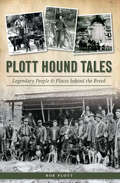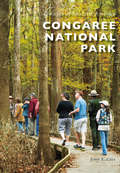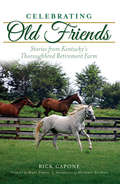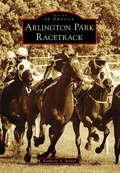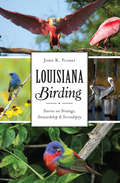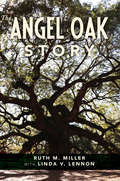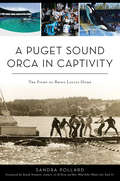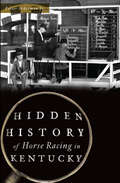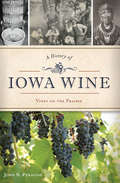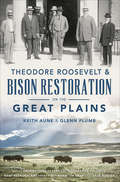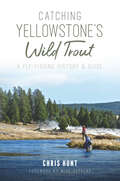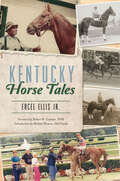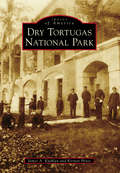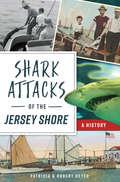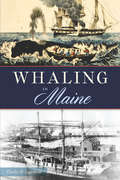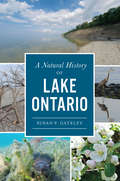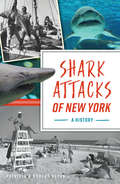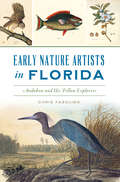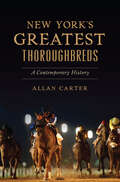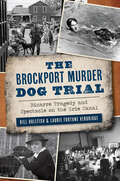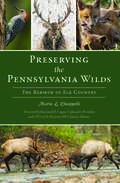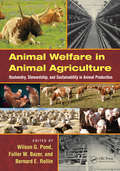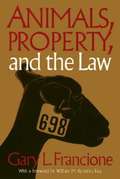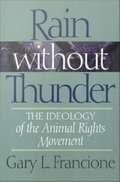- Table View
- List View
Plott Hound Tales: Legendary People & Places behind the Breed
by Bob PlottThis history of the hunting dog &“looks at the breed in relation to outlaws and lawmen, celebrities and common folks—and everyone in between&” (Appalachian History.net). Though originating in Germany, the Plott hound reached worldwide fame through the contributions of many colorful characters from the Southern Appalachians. Originally brought to America by German immigrant Johannes &“George&” Plott, the hounds quickly became renowned for their stamina and gameness. Quill Rose—a legendary local outlaw, moonshiner, gunfighter and more—helped cultivate the bloodline for bear hunting, while revered baseball icon Branch Rickey brought national acclaim to the breed through his hunts in the Hazel Creek Watershed. Writer Frank Methven wrote extensively about the Plott hound for decades, and the Methven Award remains one of the most coveted big game hunting awards in the world. Author and breed expert Bob Plott reveals the fascinating people and places that have shaped the history of the Plott hound. &“Written as only a third great-grandson of George Plott—the man who first brought the Plott bear hounds to America—could write it.&” —Watauga Democrat
Congaree National Park (Images of Modern America)
by John E. CelyLocated in central South Carolina, only a few miles from the capital city of Columbia, Congaree National Park is the largest old-growth bottomland hardwood forest left in the country and one of the most biologically diverse parks within the national park system. Nearly 100 species of trees have been documented within the park, almost as many as in the entire Pacific Northwest. The park has one of the tallest hardwood forests anywhere in the temperate world and features numerous trees of record-setting proportions, a distinction that has earned it the name �Forest of Champions.� This book discusses the early history of the area that later became the Congaree National Park, shows efforts to protect it from logging by a citizen�s grassroots campaign, traces the park�s early beginnings and development, and illustrates some of the park�s notable flora and fauna.
Celebrating Old Friends: Stories from Kentucky’s Thoroughbred Retirement Farm
by Rick Capone Mary Simon Michael BlowenWhen Michael Blowen first dreamed of creating Old Friends, he envisioned a place where Thoroughbred stallions could retire with dignity following their racing or breeding careers. He also wanted people to visit the iconic horses. In 2003, Old Friends opened on leased land with a miniature horse named Little Silver Charm, a gelding named Invigorate and a mare named Narrow Escape. Today, the two-hundred-plus-acre farm in Georgetown has more than 160 retired Thoroughbred stallions, geldings and mares, including two Kentucky Derby winners. It even welcomed two satellite farms, one in New York and one at Kentucky Downs racetrack. In his follow-up to History of Old Friends, Rick Capone revisits the unforgettable history of this horse retirement home.
Arlington Park Racetrack (Images of America)
by Kimberly A. RinkerBorn of one man's dream and built on 1,001 acres northwest of metropolitan Chicago, Arlington Park had its inaugural run in 1927 and celebrated its 90th season in 2017. Innovative and forward-thinking, Arlington set the standard of excellence during the glory days of racing. The famed racetrack survived a devastating fire in 1985, reopening four years later to worldwide acclaim. Over the decades, Arlington has played host to some of the most famous horses, jockeys, trainers, and owners in the sport of kings. Arlington is also home to the world's first million-dollar race--the renowned Arlington Million--and is the only Windy City racetrack to have hosted the Breeders' Cup Championships.
Louisiana Birding: Stories on Strategy, Stewardship & Serendipity (Natural History)
by John K. FloresFrom the bayous of the coast to prairies and rolling hills, Louisiana is home to a vibrant and thriving avian population. Herons, American goldfinches, snow geese and more call the state coastline home during the winter months. The music of neotropic songbirds like the parula and the prothonotary warbler fills the bayous every spring morning. Endangered species like the whooping crane and brown pelican have been reintroduced to the state to great success. The pragmatic conservation efforts of state, federal and private agencies not only led to the successful delisting of some endangered species of birds but also helped develop protocols for the future stewardship of others. Award-winning outdoor writer and photographer John Flores celebrates Louisiana's notable feathered inhabitants in their natural habitats.
The Angel Oak Story
by Ruth M. Miller Linda V. LennonAngel Oak is estimated to be more than 400 years old. The story of the live oak begins with the "purchase" of Johns Island from the Cussoe Indians by a representative of Sir Anthony Ashley Cooper in 1675. The land upon which the tree grows was then granted to Abraham Waight in 1717. The oak garnered its name when descendant Martha Waight married Justus Angel. This same family maintained ownership of the property for 242 years. Today, the Angel Oak is owned by the City of Charleston. Authors Ruth M. Miller and Linda Lennon describe life on Johns Island through 300 years and the special place the tree has held in the hearts of Lowcountry residents. A foreword was provided by Becky Woods, communications manager for the Lowcountry Land Trust.
A Puget Sound Orca in Captivity: The Fight To Bring Lolita Home
by Sandra Pollard David NeiwertOn August 8, 1970, the Southern Resident orcas of Puget Sound were herded into Penn Cove on Whidbey Island by explosives, spotter planes and speedboats in a coordinated effort to capture seven young whales. Between 1964 and 1976, dozens of these now-endangered orcas were torn from their home and sent to marine parks around the globe. Just over a decade later, all but one had died. This lone survivor is Tokitae, also known as Lolita, and she's spent most of her life performing at the Miami Seaquarium. For twenty years, the Orca Network has called for her release, and now the indigenous Lummi Nation, People of the Sea, have joined the fight. Author Sandra Pollard chronicles the extraordinary effort to bring Tokitae home.
Hidden History of Horse Racing in Kentucky (Hidden History Ser.)
by Foster Ockerman Jr.A behind-the-scenes history of the Bluegrass State&’s iconic sport. Horse racing and the Commonwealth of Kentucky are synonymous. The equine industry in the state dates as far back as the eighteenth century, and some of that history remains untold. The Seventeenth Earl of Derby made the trip from England to Louisville for the famed Kentucky Derby. Many famous African American jockeys grew up in the area but fled to Europe during the Jim Crow era. Gambling on races is a popular pastime, but betting in the early days caused significant changes in the sport. Hidden History of Horse Racing in Kentucky details the rich and the lesser-known history at the tracks in the Bluegrass State.
A History of Iowa Wine: Vines on the Prairie (American Palate)
by John N. PeragineIowa has a history with grapevines that goes back more than a century. New York lawyer Hiram Barney obtained a tract of land in southeast Iowa as part of the Half-Breed program following the American Indian Wars and created the White Elk Winery. German settlers in Amana tended community vineyards for communal wines. Before Prohibition, the Council Bluffs Grape Growers Association grew grapes and shipped them eastward by the ton. In the early 1900s, the state was among the nation's top producers of grapes. Pesticides, weather and government subsidies ended the time of the vines of the prairie until their recent return. Author John N. Peragine details the rise, fall and resurgence of the industry in the Hawkeye State.
Theodore Roosevelt & Bison Restoration on the Great Plains
by Keith Aune Glenn PlumbThis history chronicles the 19th century plan to reintroduce wild bison into Western Montana and the rise of Roosevelt&’s conservation movement. In the late 1800s, the rapid depletion of the American bison population prompted calls for the preservation of wildlife and wild lands in North America. Following a legendary hunt for the last wild bison in central Montana, Dr. William Hornady sought to immortalize the West's most iconic species. Activists like Theodore Roosevelt rose to the call, initiating a restoration plan that seemed almost incomprehensible in that era. This thoroughly researched history follows the ambitious project from the first animals bred at the Bronx Zoo to today's National Bison Range. Glenn Plumb, a former chief wildlife biologist for the National Park Service, and Keith Aune, the former Wildlife Conservation Society director of bison programs, demonstrate how the success of bison repopulation bolstered Roosevelt's broader conservation efforts.
Catching Yellowstone's Wild Trout: A Fly-Fishing History and Guide (Natural History)
by Chris HuntThis history and guide to the fly-fishing waters of Yellowstone National Park is a loving homage to the region&’s iconic wild trout. Yellowstone National Park is home to some of the most storied destinations in the history of fly fishing. Casting in the Firehole River is like going back in time to when bison roamed nearly every meadow in the West. Restored to their natal streams after near extinction, native Arctic grayling can once again be plucked from icy water at the foot of breathtaking waterfalls. Meanwhile, a daylong hike into true wild country rewards an angler with a chance to catch trophy native cutthroat trout on a lonely mountain lake. In Catching Yellowstone&’s Wild Trout, local journalist and experienced angler Chris Hunt explores the rich history of these beloved and bountiful waters.</
Kentucky Horse Trails (Sports)
by Ercel EllisErcel Ellis Jr. was born into the Thoroughbred horse business and has worked in it for seventy-five years.He has been an owner, breeder, trainer, writer and radio broadcaster. His radio show, Horse Tales, has run for twenty years. For all his work, he won the Charles W. Engelhard Award for contributions to the industry. During his life, Ercel has amassed a trove of stories on some of the biggest names in Thoroughbred racing, like Mata Hari, Spy Song and world-famous Man o' War. He also includes stories of lesser-known horses like Dark Mirage, El Chico, Blue Peter and By Jimminy. Join Ercel as he entertains with fascinating stories from more than seven decades with Thoroughbreds.
Dry Tortugas National Park (Images of America)
by James A. Kushlan Kirsten HinesIsolated 70 miles west of Key West, the islands of Dry Tortugas National Park appear to arise as if by magic, floating atop the waters of the Gulf of Mexico. Discovered by Juan Ponce de León over 500 years ago, Tortugas is North America’s second-oldest persistent place name. The adjacent Florida Strait provided essential passageway for navies, ships of commerce, pirates, and privateers. Its reefs claimed hundreds of ships over the centuries. The nation’s largest masonry fort, Fort Jefferson, secured Union control of the Florida Strait during the Civil War and served as the infamous prison for Dr. Samuel Mudd and other convicted Lincoln conspirators. Its waters, coral reefs, and aquatic life remain among the most biologically intact in North America. Seabird species nest here that nest nowhere else on the continent. The Tortugas has attracted generations of naturalists, scientists, fishermen, divers, birders, and other visitors. The islands and waters of the Dry Tortugas remain today remote, historic, and biologically pristine.
Shark Attacks of the Jersey Shore: A History (Disaster)
by Patricia Heyer Robert HeyerEvery summer, thousands flock to the Jersey Shore for its beaches and boardwalks, but lurking in the depths beyond is a historic threat to tranquility. Dozens of shark attacks and interactions have occurred throughout Jersey Shore history that reveal bravery, heartbreak and the hubris of man. A boy paid a gruesome price for teasing a trapped shark in the first recorded attack in 1842. The three bloody attacks of 1960 left one man's limb amputated. The horrific summer of 1916 included seven attacks in a two-week span and crafted the caricature of the killer shark that remains in popular culture today. Authors Patricia and Robert Heyer dive into the history of when two apex predators, man and shark, cross paths on the shores of New Jersey.
Whaling in Maine
by Charles H. LagerbomThe history of American whaling is most frequently associated with Nantucket, New Bedford and Mystic. However, the state of Maine also played an integral part in the development and success of this important industry. The sons of Maine became whaling captains, whaling crews, inventors, investors and businessmen. Towns along the coast created community-wide whaling and sealing ventures, outfitted their own ships and crewed them with their own people. The state also supplied the growing industry with Maine-built ships, whale boats, oars and other maritime supplies. For more than two hundred years, the state forged a strong and lasting connection with the American whaling industry. Author and historian Charles Lagerbom reveals why Maine should rightly take its place alongside its more well-known New England whaling neighbors.
A Natural History of Lake Ontario (Natural History)
by Susan P. GateleyFormed by glaciers more than twelve thousand years ago, Lake Ontario has captivated nature lovers for generations. Unique among the Great Lakes for having once been connected to the sea, fossils from ocean life have been found near the lake's shores. Damage done to Lake Ontario's ecosystem from centuries of human activity was center stage in the fight to pass the Clean Water Act and the restoration that followed. From incredibly diverse bird migrations in the spring and fall to the squalls and lake effect snow in winter, each season offers a rich ecological tapestry. Author Susan P. Gateley charts the natural history of Lake Ontario from its ice age origins to the climate and habitat challenges it faces today.
Shark Attacks of New York: A History (Disaster)
by Patricia Heyer Robert HeyerNew York's crowded beaches can come to halt with the shout of a single word: shark! The shores of Long Island and Staten Island and the waters surrounding Manhattan have had more than thirty shark attacks recorded since the days of New Amsterdam. Legend has it that Antony Van Corlear, Peter Stuyvesant's trusted deputy, was killed by a shark crossing Spuyten Duyvil Creek while blowing his famed trumpet. In the summer of 1916, after a series of bloody encounters along the Jersey Shore, sharks terrorized beachgoers of Sheepshead Bay, frightening the entire region. Two incidents on Fire Island in 2018 within mere hours and miles of each other involved a twelve-year-old and a thirteen-year-old, striking fear in the hearts of parents. Authors Patricia and Robert Heyer chart the history of New York's shark attacks.
Early Nature Artists in Florida: Audubon and His Fellow Explorers
by Chris FasolinoFlorida's amazing landscapes and fascinating wildlife were sources of inspiration for early naturalists seeking new horizons. Among them was John James Audubon. Elegant herons, acrobatic terns, endearing pelicans and colorful roseate spoonbills all feature among his beloved artwork. But Audubon was not the first nature artist inspired by Florida. Mark Catesby, an English country squire turned adventurer, helped introduce the wonders of Florida to a European audience in the 1700s. And William Bartram, a Pennsylvania Quaker, traveled south to explore the Florida wilderness, where he canoed across a lake full of alligators and lived to sketch the creatures. Author Chris Fasolino shares the stories of these artistic expeditions in a collection replete with gorgeous artwork that includes high-definition images of Audubon's rarely seen original paintings.
New York’s Greatest Thoroughbreds: A Contemporary History (Sports)
by Allan CarterChampion Race Horses of the Empire State From Saratoga to Belmont Park, New York hosts some of horse racing's most important races, but many of the most successful thoroughbreds of the past five decades also have called the state home. Say Florida Say seemed to only improve with age, winning thirty-three times throughout a seven-year career that made him a regional favorite in the 1990s. The first ever New York horse to win the Kentucky derby, Funny Cide, rose to national prominence in 2003, winning both the Derby and the Preakness in incredible fashion. The thoroughbred Audible shared owners with triple-crown winner Justify, and though embroiled in some controversy as a result, was also an elite race horse during a brief career. Author Allan Carter highlights the stories behind the greatest New York thoroughbreds of the past half-century.
The Brockport Murder Dog Trial: Bizarre Tragedy and Spectacle on the Erie Canal (True Crime)
by Bill Hullfish VerbridgeIn the summer of 1936, fourteen-year-old Maxwell Breeze was playing in the waters of the Erie Canal in Brockport when a dog jumped into the canal and climbed his back, and the boy drowned. The owner of the dog was served notice to appear at a hearing, at which time a trial was set to determine if the dog should be put down. The unusual case captivated the nation as newspapers from coast to coast covered the story, Paramount Pictures dispatched "The Eyes and Ears of the World" to film the events and a media circus descended on the quiet village. During the trial, more than thirty witnesses were called, including a national expert brought in to evaluate the canine defendant, which journalists referred to as "the most talked-of dog on earth." Authors Bill Hullfish and Laurie Fortune Verbridge reveal the bizarre incident, trial and spectacle that came to Brockport.
Preserving the Pennsylvania Wilds: The Rebirth of Elk Country (The History Press)
by Mario ChiappelliA Legacy of Conservation Every year thousands flock to the Pennsylvania Wilds to be among nature and its famous elk herd. In the past, dangerous levels of hunting and industrial development forever altered Pennsylvania's natural landscape and drove its native elk to near extinction. In response, concerned sportsmen and conservationists pushed the state legislature to create a game commission in the late 1800s to enforce game laws and protect the herd. The Pennsylvania Game Commission then sought to reintroduce the once mighty elk herd in the early twentieth century, shipping fifty elk via train from Jackson Hole and Yellowstone. Conservation movements continued to enhance the state's environmental landscape that faced new threats from logging and mining industries and by the 1980s, the Wilds was on a path to full restoration. Author Mario Chiappelli reveals the history of how the Pennsylvania Wilds and its elk herd remain as vibrant as ever today.
Animal Welfare in Animal Agriculture: Husbandry, Stewardship, and Sustainability in Animal Production
by Wilson G. Pond Fuller W. Bazer Bernard E. RollinWhat constitutes animal welfare? With animals being used for companionship, service, research, food, fiber, and by-products, animal welfare is a topic of great interest and importance to society. As the world's population continues to increase, a major challenge for society is the maintenance of a strong and viable food system, which is linked to t
Animals, Property, and the Law
by Gary L. Francione"Pain is pain, irrespective of the race, sex, or species of the victim," states William Kunstler in his foreword. This moral concern for the suffering of animals and their legal status is the basis for Gary L. Francione's profound book, which asks, Why has the law failed to protect animals from exploitation? Francione argues that the current legal standard of animal welfare does not and cannot establish fights for animals. As long as they are viewed as property, animals will be subject to suffering for the social and economic benefit of human beings. Exploring every facet of this heated issue, Francione discusses the history of the treatment of animals, anti-cruelty statutes, vivisection, the Federal Animal Welfare Act, and specific cases such as the controversial injury of anaesthetized baboons at the University of Pennsylvania. He thoroughly documents the paradoxical gap between our professed concern with humane treatment of animals and the overriding practice of abuse permitted by U. S. law. Author note: Gary L. Francione is Professor of Law and Nicholas de B. Katzenbach Scholar of Law at Rutgers University Law School, Newark. He is also Co-director of the Rutgers Animal Rights Law Center.
Introduction to Animal Rights: Your Child or the Dog?
by Francione Gary L.Two-thirds of Americans polled by the Associated Press agree with the following statement: "An animal's right to live free of suffering should be just as important as a person's right to live free of suffering. " More than 50 percent of Americans believe that it is wrong to kill animals to make fur coats or to hunt them for sport. But these same Americans eat hamburgers, take their children to circuses and rodeos, and use products developed with animal testing. How do we justify our inconsistency? In this easy-to-read introduction, animal rights advocate Gary Francione looks at our conventional moral thinking bout animals. Using examples, analogies, and thought-experiments, he reveals the dramatic inconsistency between what we say we believe about animals and how we actually treat them. Introduction to Animal Rights: Your Child or the Dog? provides a guidebook to examining our social and personal ethical beliefs. It takes us through concepts of property and equal consideration to arrive at the basic contention of animal rights: that everyone -- human and non-human -- has the right not to be treated as a means to an end. Along the way, it illuminates concepts and theories that all of us use but few of us understand -- the nature of "rights" and "interests," for example, and the theories of Locke, Descartes, and Bentham. Filled with fascinating information and cogent arguments, this is a book that you may love or hate, but that will not fail to inform, enlighten, and educate.
Rain without Thunder: The Ideology of the Animal Rights Movement
by Francione Gary L.Are "animal welfare" supporters indistinguishable from the animal exploiters they oppose? Do reformist measuresreaffirmthe underlying principles that make animal exploitation possible in the first place? In this provocative book, Gary L. Francione argues that the modern animal rights movement has become indistinguishable from a century-old concern with thewelfareof animals that in no way prevents them from being exploited. Francione maintains that advocating humane treatment of animals retains a sense of them as instrumental to human ends. When they are considered dispensable property, he says, they are left fundamentally without "rights. " Until the seventies, Francione claims, this was the paradigm within which the Animal Rights Movement operated, as demonstrated by laws such as the Federal Humane Slaughter Act of 1958. In this wide-ranging book, Francione takes the reader through the philosophical and intellectual debates surrounding animal welfare to make clear the difference between animal rights and animal welfare. Through case studies such as campaigns against animal shelters, animal laboratories, and the wearing of fur, Francione demonstrates the selectiveness and confusion inherent in reformist programs that target fur, for example, but leave wool and leather alone. The solution to this dilemma, Francione argues, is not in a liberal position that espouses the humane treatment of animals, but in a more radical acceptance of the fundamental inalienability of animal rights. Author note:Gary L. Francioneis Professor of Law and Nicholas de B. Katzenbach Scholar of Law at Rutgers University Law School, Newark. He is the co-director of the Rutgers Animal Rights Law Center and the author ofAnimals, Property, and the Law(Temple).
